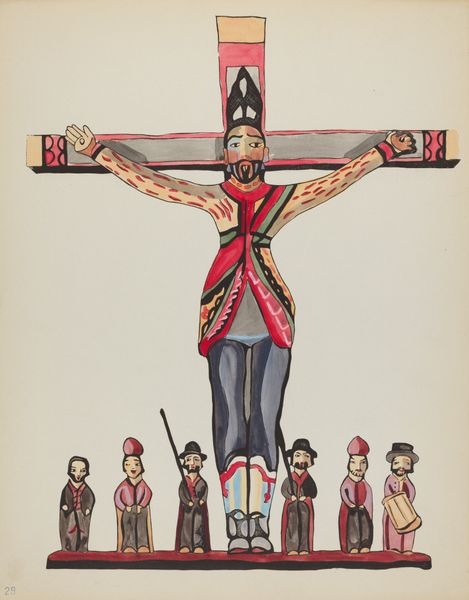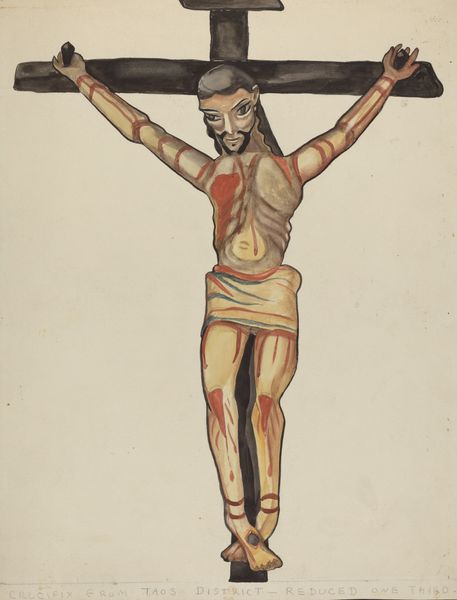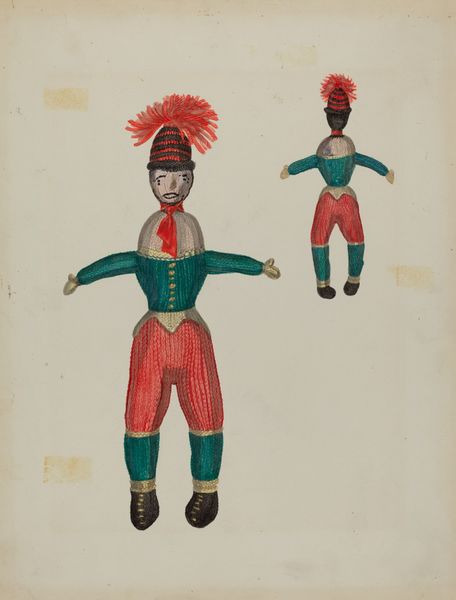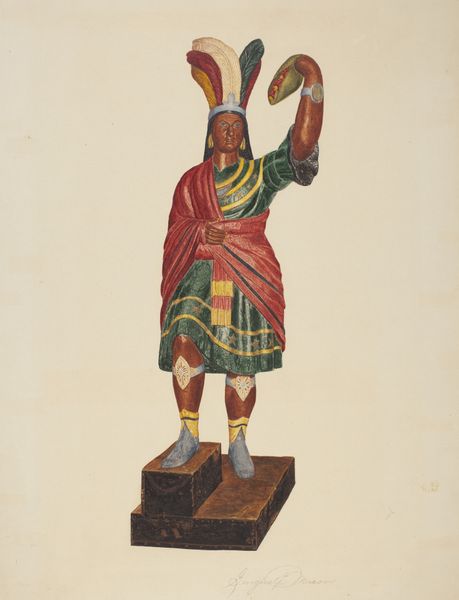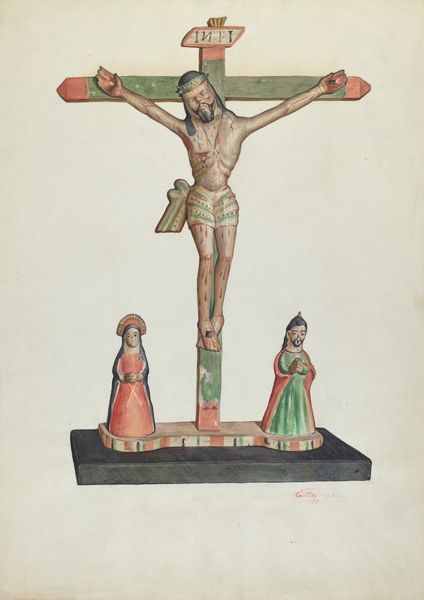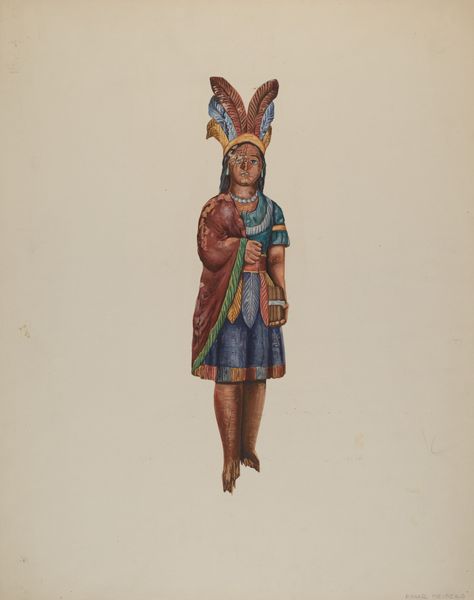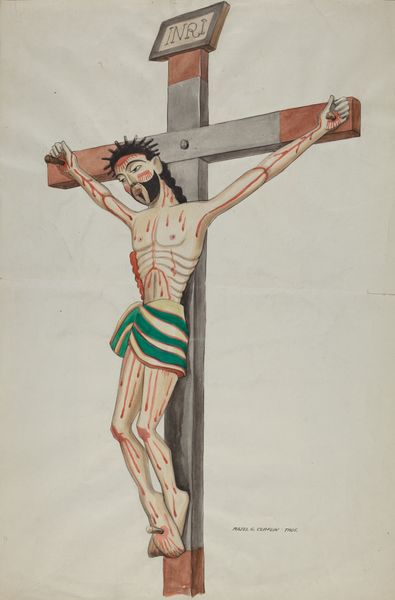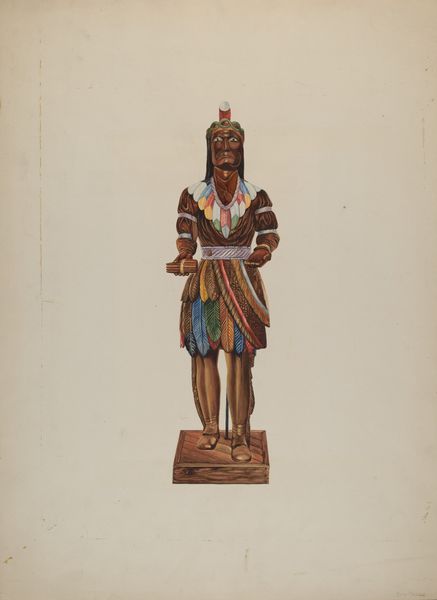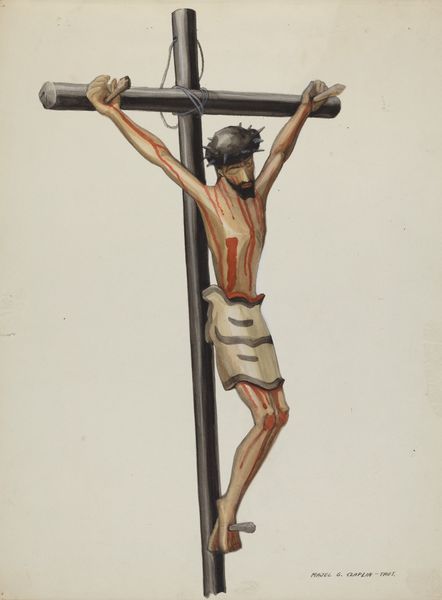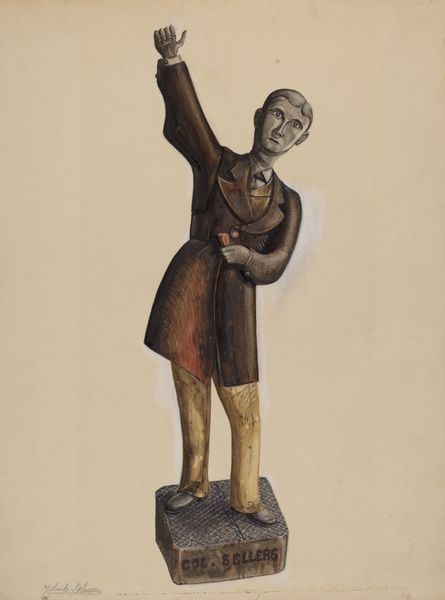
drawing, watercolor
#
portrait
#
drawing
#
landscape
#
painted
#
figuration
#
watercolor
#
folk-art
#
naïve-art
#
watercolor
Dimensions: overall: 36.9 x 27.9 cm (14 1/2 x 11 in.) Original IAD Object: 28"x22"
Copyright: National Gallery of Art: CC0 1.0
Editor: This is Margery Parish's "San Acacio," a watercolor and ink drawing from around 1938. There’s something quite charming and almost dreamlike about the flattened perspective and the folk-art style. What strikes you most when you look at this work? Curator: The configuration certainly presents some interesting tensions. The linear arrangement of the figures contrasts rather starkly with the somewhat haphazard rendering of depth and perspective throughout. Notice the curious flattening of the picture plane. The figures are presented with a geometric starkness and are defined almost entirely by outline. Editor: I see what you mean. It's almost like she’s deliberately avoiding traditional techniques. Why would Parish create an artwork like this, eschewing established norms? Curator: It's difficult to determine motivation definitively without the artist's statement, but one could interpret it as an assertion of autonomy or an interest in direct, unmediated expression. Note the flatness of the color. There is almost no attempt to gradate from dark to light tonalities or values. Do you notice that this, in fact, heightens the iconic presentation? Editor: That’s a really astute observation. It becomes less about representing something real, and more about presenting an idea, right? The use of the outline and stark presentation forces me to focus on shape and color instead of illusion. Curator: Precisely. Furthermore, reflect on the relationships established in the geometric configuration of form. How does that shape and composition contribute to the significance of the whole, not only culturally but, crucially, aesthetically? Editor: It all pulls together—it’s a far more constructed and considered composition than it seems at first glance. I wouldn’t have considered all these factors on my own! Curator: By analyzing the constituent visual elements, we illuminate how their intrinsic structure contributes to a layered artwork.
Comments
No comments
Be the first to comment and join the conversation on the ultimate creative platform.

